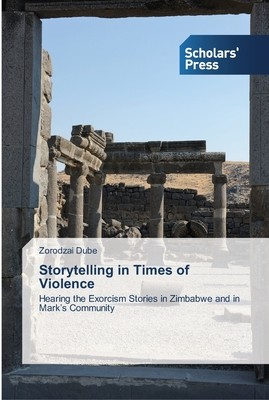
- We will send in 10–14 business days.
- Author: Zorodzai Dube
- Publisher: Scholars' Press
- ISBN-10: 3639518764
- ISBN-13: 9783639518764
- Format: 15.2 x 22.9 x 1.9 cm, softcover
- Language: English
- SAVE -10% with code: EXTRA
Reviews
Description
Violence shutters a community's ability to survive. By using violence in Zimbabwe as analogy, this book explores, using various theories such as cultural trauma, historical critical methods, narrative approaches and orality, to establish how the memory of the exorcism stories functioned within Mark's community. The rhetoric of violence expressed from the stories is read in view of the possible context of Mark's community around AD70 to suggest the oral function of the stories. The book suggests that within a context of violence, the exorcism stories functioned as cultural trauma meaning making narratives that provided the mythical language from which the community articulated its suffering as a shared story
EXTRA 10 % discount with code: EXTRA
The promotion ends in 19d.18:58:49
The discount code is valid when purchasing from 10 €. Discounts do not stack.
- Author: Zorodzai Dube
- Publisher: Scholars' Press
- ISBN-10: 3639518764
- ISBN-13: 9783639518764
- Format: 15.2 x 22.9 x 1.9 cm, softcover
- Language: English English
Violence shutters a community's ability to survive. By using violence in Zimbabwe as analogy, this book explores, using various theories such as cultural trauma, historical critical methods, narrative approaches and orality, to establish how the memory of the exorcism stories functioned within Mark's community. The rhetoric of violence expressed from the stories is read in view of the possible context of Mark's community around AD70 to suggest the oral function of the stories. The book suggests that within a context of violence, the exorcism stories functioned as cultural trauma meaning making narratives that provided the mythical language from which the community articulated its suffering as a shared story


Reviews